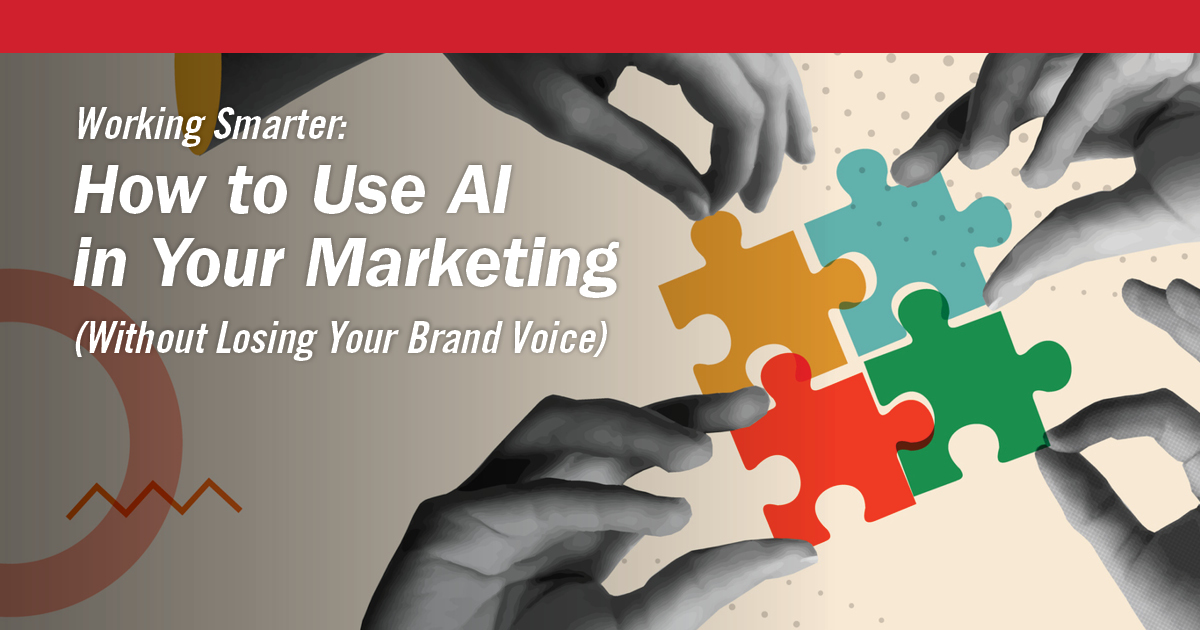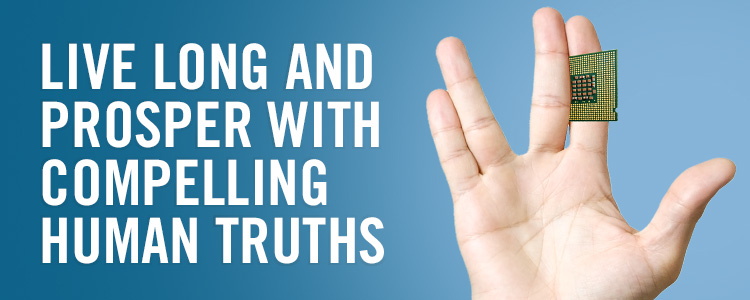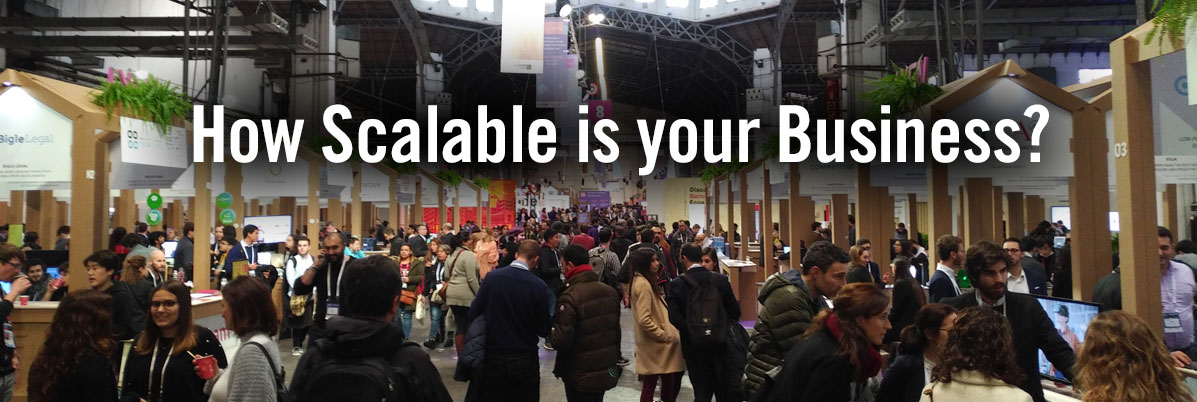
Working Smarter: How to Use AI in Your Marketing (Without Losing Your Brand Voice)
AI tools like ChatGPT and Microsoft Copilot are becoming everyday tools in marketing teams everywhere. But how do you use them in ways that add […]

More Gold Nugget Advice from Tech Marketers in Vegas
Earlier this year, we shared our list of six key takeaways from the seminars we attended at CES 2018. As we are getting closer to CES 2019, we are reflecting on some of the gems that really rang our bell from the event last year. In our first article we expanded on the first half of the list and we’ll expand on the second half of the list:
Takeaway #4: Spock is not your customer
Takeaway #5: Online advertising is a three-legged stool
Takeaway #6: Consumers are fans to their passion, not your brand
Wisdom from Intel (people who know something about marketing tech)
Unlike the iconic character of Spock, your customers aren’t cold and emotionless, so your marketing can’t be. Marketing pioneers Intel know this well. They have been engaging audiences with interesting stories for years.
Intel successfully branded a single component within the multiple pieces of a desktop computer 25 years ago, and have kept it going strong. Ultra-challenging because their “Intel-inside” brand has to stand alongside the computer manufacturer’s brands that house them (i.e. HP, Acer, Microsoft).
Additionally challenging because getting people pumped about processors is not easy. It’s a commodity category where much of the public will be asleep before you finish your fourth sentence. For this reason and many more, it is worth listening when leaders from this tech giant talk about marketing.
Intel sent Teresa Herd, their VP Global Creative Director, to speak to global tech leaders at CES and share their philosophy on how to break through the noise. With most tech deals taking place between one business and another (B2B) Teresa’s challenge to leaders was to stop communicating to business decision makers as if they’re decision-making robots.
She cautioned that just talking to buyers about ‘feeds and speeds’ is not enough, the way tech companies get meetings with potential customers starts with awareness and interest in what your brand has to offer. To generate interest, you need to be interesting. Tech companies are good at innovation – they’re not so good at being interesting
Intel believes that ‘being interesting’ and learning how to tell their stories well is so important that they’ve hired a large internal staff of expert communicators. “When we talk about putting tech backpacks on bees and using micro-drones to collect whale snot”, we capture people’s attention”, says Teresa. “We need to get people excited and say look at what these things can do!”
The tech that Intel invests in is always there to fulfill a need and purpose. “To make it interesting we need to talk about how the humans will actually be better off – engage with buyers’ emotions and speak to the real-world benefits, not just the functionality. We need to tap into human truths that are also entertaining.”
Collecting whale snot with micro-drones and putting backpacks on bees clearly has the entertainment quotient but she elaborated on the human truths part of the equation. “40% of business leaders fear their industries will not be relevant in five years so engage the fear. Address it in communications by using empathy and humour, and focus on tech’s ability to empower humans not replace them.”
Later that evening, Intel put on a world record-breaking lightshow in front of the Bellagio hotel using 2,018 drones to engage and amaze people. Representing the unlimited nature of the innovations that Intel offers.
Think about how you can apply Intel’s communications philosophy to your business. What can you showcase that will amaze people? What human truth and emotions can the end-game of your technology tap into? What human benefit and potential can your tech release?
If one the world’s most successful tech brands believes that storytelling and being interesting is a competitive advantage for them – then it is likely worth you investing some time thinking about it yourself.
Super-hot digital property follows age-old advertising equation
The scary part about going to a leading global tech conference is you might discover that the expertise you have or the industry you’re in, has been eclipsed. But you also might hear something that validates your beliefs. That is exactly what happened when we heard CEO Neil Vogle of Dotdash (originally www.about.com) talk about their transformation into a profitable online property
Recently transitioned into seven specialized content properties, Dotdash has evolved into a profitable entity, on-track to surpass $100 MM in revenue this year. In its original format, as about.com, it was one of the longest-standing and respected content publishers. It succeeded in generating strong traffic volumes but failed to generate profit, until now.
Neil Vogel has been leading Dotdash’s evolution since 2014 and shared his surprisingly fundamentals-based statement to make about online advertising, “It’s a three-legged stool: the first being a high-benefit offer, the second being the right channel to get in front of your audience and the third is the ability to make an emotional connection with your target through high-impact creative.”
He talked about how difficult, but essential, it is to make an emotional connection. That artificial intelligence and tracking data can help us figure out what channel or medium to use to get in front of the desired audience but there has to be a human truth in the message. Another guideline for all seven of Dotdash’s properties is that “humans need to enjoy their time with us so we make beautiful things that people can enjoy”.
When you go to a global-leading tech conference, the last thing you expect is to hear a CEO talk about how 100-year old advertising fundamentals are still relevant. So, we spent some time reflecting on it and concluded there is special lesson in it for tech companies.
The lesson is to be careful assuming that old is bad. Proven approaches reduce your risk. You likely already have enough risk built into your tech as you’re often trying to do something that no one has done before. So, focus on new in your tech but take a favourable look at proven marketing and advertising practices before assuming they don’t apply to you.
Stop talking about customers being your brand ambassadors – it likely won’t work
Offering his expert opinion as part of a highly respectable panel of global marketing leaders, Raja Rajamannar, Chief Marketing and Communications Officer for MasterCard, made a refreshingly bold brand statement that made us stand up and take notice.
Panel members spoke of expected perspectives such as generating emotional connections / reactions to their brands, being “in the business of creating fans” for their brands, and so on. But Raja, spoke up with a few hard-hitting wake-up calls that were truly a breath of fresh air.
“Research shows that 88% of brands could disappear tomorrow, and no one would care. Consumers are fans to their passions NOT your brand.” If and when your brand speaks to their pre-existing interests and passion, affection and affinity can be generated for your brand and that is a valuable pursuit.
Raja went on to say that affection and affinity with the ideas your brand talks about are the real goals, not loyalty and passion for your brand. That for most companies, creating brand fans is something that the organizational perspective will celebrate and agree on but it usually is not a market-based reality.
Raja’s perspective caused bristling discomfort amongst the panel members. But the panel did agree that it is possible to have employees become brand ambassadors and fans because they have a bigger stake in the game. Employees want something bigger to get excited about and to rally around then just their paycheque.
The big takeaway from Raja is to focus on creating brands that speak into customers’
pre-existing passions and interests, because it is possible for customers to have affection and affinity with the ideas that your brand talks about. Affection and affinity are the goals to pursue but brand loyalty is a misdirected chase.
By Brent Smith, Brand Developer & Marketing Strategist
If you’re interested in the first three nuggets on our list, please check out the article here.
NOTE: our six nuggets came about as a result of having listened to some global leaders but they’re our own interpretation of what we heard and our own implications. We don’t want to attribute anything in this article as being a direct quote for concern of misrepresenting a speaker but we do offer our thanks to what we learned from the following speakers / leaders:


AI tools like ChatGPT and Microsoft Copilot are becoming everyday tools in marketing teams everywhere. But how do you use them in ways that add […]

In February of 2018, 6P’s fearless leader, Paul, took some time during a well-earned vacation to join the Western Canadian Trade Delegation in Barcelona for […]

Takeaways from 6P Marketing’s trip to CES 2018 in Las Vegas While most of the 180,000 visitors that descended upon this year’s International Consumer Electronics […]